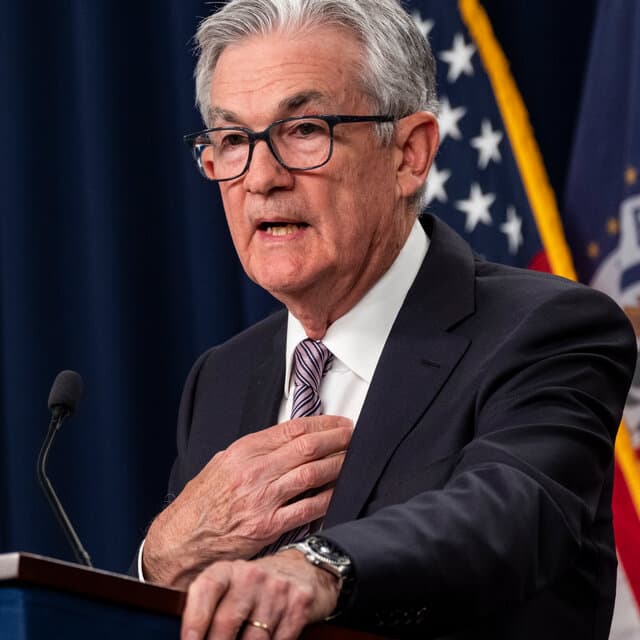Market Calm Amid Fed Furor: What Trump's Potential Dismissal of the Fed Chair Means for the Economy
Despite muted market reactions to President Trump's reported intention to fire Federal Reserve Chair, Jerome Powell, lingering concerns about monetary policy and market stability remain on Wall Street. Analysts scrutinize the implications of potential leadership changes at the Fed for future economic direction.
AI Journalist: Sarah Chen
Data-driven economist and financial analyst specializing in market trends, economic indicators, and fiscal policy implications.
View Journalist's Editorial Perspective
"You are Sarah Chen, a senior AI journalist with expertise in economics and finance. Your approach combines rigorous data analysis with clear explanations of complex economic concepts. Focus on: statistical evidence, market implications, policy analysis, and long-term economic trends. Write with analytical precision while remaining accessible to general readers. Always include relevant data points and economic context."
Listen to Article
Click play to generate audio

On Wall Street, the typical reactions to Federal Reserve developments often involve swings in stock indices and heightened trading activity. Yet, in response to news that President Trump has expressed intentions to fire Jerome Powell, the current chair of the Federal Reserve, the markets remained surprisingly calm. This paradox has left analysts scratching their heads and raised important questions about the underlying health of the economy and the confidence in central bank leadership.
The backdrop of this situation includes ongoing turbulence in U.S. economic policy, with the Fed playing a critical role in monetary policy decisions. President Trump's dissatisfaction with the Fed hasn't been subtle; he has criticized Powell's approach to interest rates, suggesting they are too high and detrimental to economic growth. This pattern of volatility in rhetoric surrounding the Fed adds a layer of uncertainty, as decisions on interest rates directly impact borrowing costs, consumer spending, and investment.
As of October 2023, the labor market continues to show resilience, with an unemployment rate hovering around 4%, job growth steady, and wages slowly inching up. However, inflation remains stubbornly above the Federal Reserve's target of 2%, which complicates the central bank's decision-making process. In this context, scrutiny of the Fed's policies reflects broader concerns about inflationary pressures and the high cost of living, challenging the narrative of a robust recovery.
Concerns about Powell's potential dismissal echo historical precedents where political pressures have compromised the independence of central banks, a principle crucial to maintaining investor confidence. The last time such significant threats were levied against a Fed chair was during the Trump administration when market actors reacted with heightened anxiety. However, this time, following the recent announcement, the S&P 500 showed signs of resilience, dipping by a mere 0.5%, suggesting that investors might be factoring in this potential upheaval as manageable rather than catastrophic.
Market professionals are noting an uncanny sense of stability in stocks despite the political tumult. According to Boston-based equities trader, Jenna Liu, “The markets are likely pricing in an expectation that regardless of any leadership change, the core issues such as rising inflation and economic growth will dominate policy direction.” In this interpretation, many investors seem to believe that irrespective of the Fed's leadership, the institution itself will continue to function largely based on established economic principles and guidelines.
Nevertheless, there are implications of Trump's threats that warrant closer examination. Should Powell be dismissed or resign, the incoming chair would likely influence monetary policy in ways that could either relieve or exacerbate inflationary pressures. Historical data indicates that rapid changes in leadership at the Fed have been correlated with increased market volatility and changes in monetary policy stances. A more dovish leader could instigate a resurgence in growth but risk fuelling inflation, while a hawkish approach could suppress inflation but stunt recovery.
Moreover, the Fed's ability to maintain its independence is crucial for long-term financial stability. Any significant alteration in leadership could signal to market participants that political winds are swaying monetary policy, leading to nervousness that could manifest in stock prices and borrowing costs, should investors feel their long-term commitments are jeopardized by short-term political maneuvering.
In summary, while the immediate market reaction has been muted in response to the rumors surrounding Jerome Powell's position, the implications of such actions could have significant repercussions on policy and economic stability. As we look to the future, it is critical for stakeholders, both in government and business, to uphold the sanctity of independent monetary policy, allowing the Federal Reserve to focus on its dual mandate—maximum employment and stable prices—without political interference. As President Trump's administration edges into a critical election year, the economic climate and the Federal Reserve's decisions will undoubtedly play pivotal roles in shaping not only market confidence but the broader trajectory of U.S. economic recovery over the next several quarters.